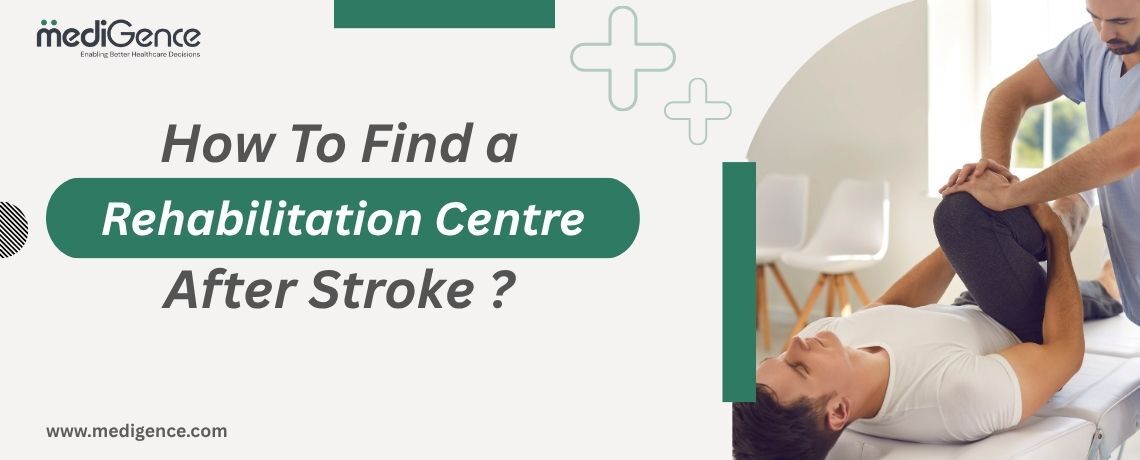Recovery from stroke is an arduous process that sometimes needs a coordinated and all-encompassing therapeutic intervention. For most survivors of stroke, selecting the optimal rehabilitation center is key to recovering their independence, their physical and mental functions, and their quality of life. Selecting a facility that can satisfy every patient’s individual needs and preferences can have a dramatic effect on the speed and degree of recovery. This manual examines the most important factors, different types of rehab facilities, services provided, questions to ask, and resources to assist patients and families in selecting the ideal stroke rehabilitation center.
During rehabilitation following a stroke, multiple therapies are applied to restore the lost function or to compensate for the change in social, emotional, cognitive, and physical function. The intensity and nature of rehabilitation are determined by the overall health of the patient, the severity of the stroke, and the location of the brain involved.
Rehabilitation should include:
• Speech and Language Therapy
• Cognitive therapy
• Psychological Support
Methods of Stroke Rehabilitation Centers:
Knowing the various kinds of facilities is the beginning of finding proper care:
1. Inpatient rehabilitation facilities: Give intense therapy five or six days a week, typically for three hours a day.
2. 24-hour medical and nursing support: Perfect for patients who need continuous medical supervision and intensive care.
3. Outpatient Rehabilitation Centers: Perfect for those who live at home but require ongoing therapy. Sessions usually take place one to five times per week.
4. Home-Based Rehabilitation: Where the therapist visits the patient at home. Perfect for those who travel is a barrier.
Factors to Consider When Choosing a Rehab Center:
There are several things to consider when selecting a facility:
1. Verify Correct Accreditation: Verify the rehabilitation center’s accreditation before selecting one. Seek out facilities that have received approval from reputable agencies such as The Joint Commission or the Commission on Accreditation of Rehabilitation Facilities (CARF). These accreditations attest to the center’s compliance with strict care requirements, particularly in the area of stroke rehabilitation.
2. A Group of Professionals Cooperating: A strong multidisciplinary team is essential for quality rehabilitation. Care is typically much more efficient and smoother when everyone is working together under a single plan.
3. Therapy Frequency and Extent: The extent and frequency of therapy have a tremendous impact on recovery. As a general rule, more therapy sessions of longer duration result in quicker and more worthwhile progress. Inquire about the frequency of sessions and whether or not the frequency can be customized to meet your or your loved one’s needs and goals.
4. Therapist-to-Patient Ratio: The number of therapists available to the number of patients tells a lot about the level of individual attention.
5. Encouraging Family Involvement: Recovery doesn’t just happen in therapy sessions—it continues at home. Family involvement must be there, offering education and guidance to help loved ones take part in therapy and decision-making.
7. Accessibility and Location: You would be surprised at how much convenience matters. Family and friends can come and continue to be involved more readily at a center that is near them. It also cuts down on the hassle of traveling to appointments, especially when one’s energy and mobility may be low.
8. Outcomes and Success Rates: Ask about patient success rates, readmission rates, testimonial videos, and discharge outcomes.
Questions while choosing the right rehab center:
To make sure a facility fits your needs, prepare a few questions for when you evaluate it:
- Does the facility have adequate infrastructure to deliver effective stroke rehabilitation?
- How is the program designed and delivered?
- Their experience in treating acute to chronic stroke symptoms
- Their approach to treating patients with severe mental health issues
- Is the program customized or standard for everybody?
- How are objectives and progress tracked?
Conclusive Summary:
Selecting the right stroke rehabilitation facility is one of the most important stages of the healing process, where the most effective rehabilitation centers offer personalized, hands-on care delivered by a team of specialists who understand the complex journey of stroke recovery. These facilities focus on helping individuals regain their independence and confidence gradually. The facility should not solely be chosen based on their proposed pricing; instead, their expertise, experience, and approach are the key.
